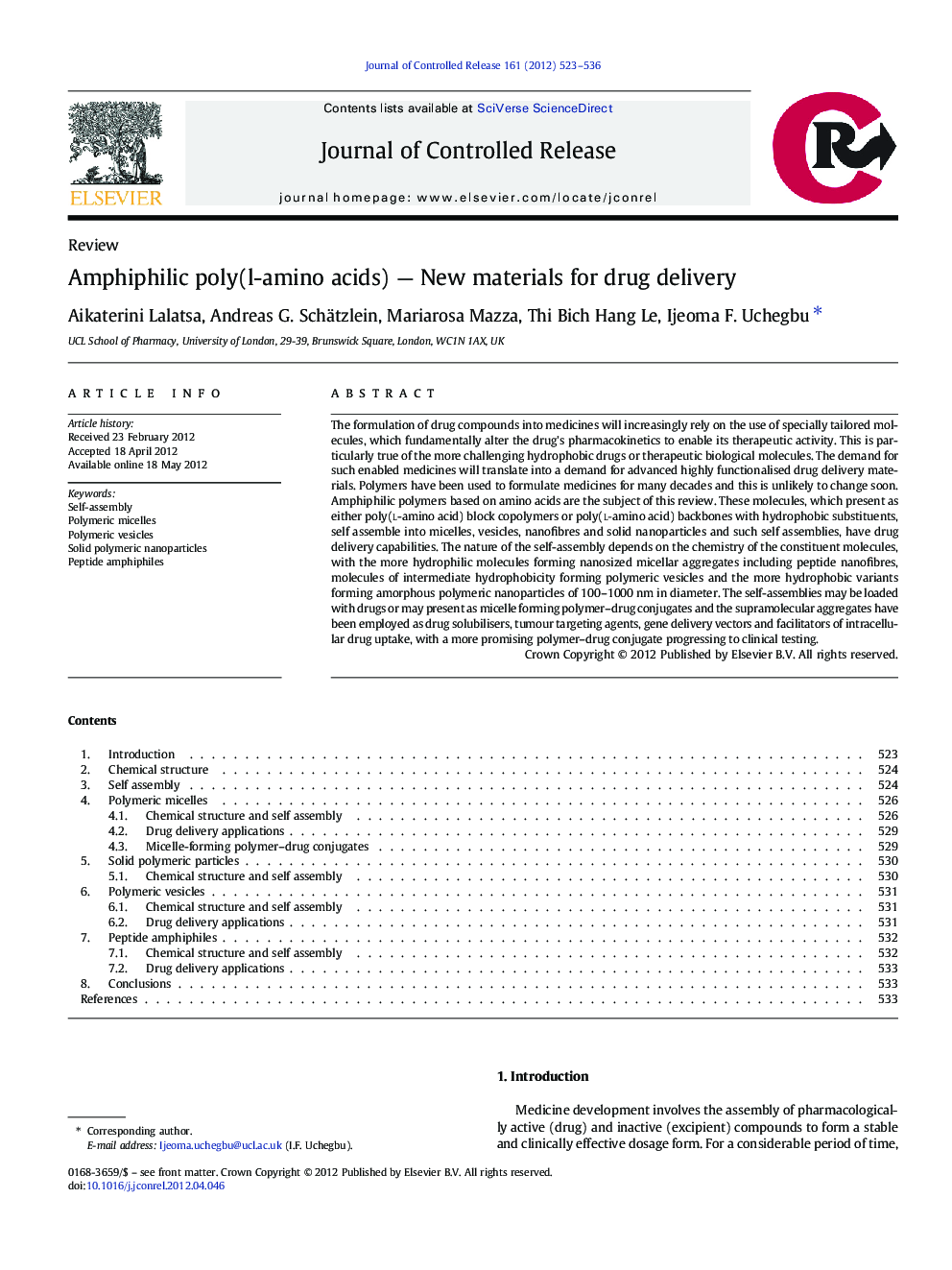| کد مقاله | کد نشریه | سال انتشار | مقاله انگلیسی | نسخه تمام متن |
|---|---|---|---|---|
| 1424428 | 986722 | 2012 | 14 صفحه PDF | دانلود رایگان |

The formulation of drug compounds into medicines will increasingly rely on the use of specially tailored molecules, which fundamentally alter the drug's pharmacokinetics to enable its therapeutic activity. This is particularly true of the more challenging hydrophobic drugs or therapeutic biological molecules. The demand for such enabled medicines will translate into a demand for advanced highly functionalised drug delivery materials. Polymers have been used to formulate medicines for many decades and this is unlikely to change soon. Amphiphilic polymers based on amino acids are the subject of this review. These molecules, which present as either poly(l-amino acid) block copolymers or poly(l‐amino acid) backbones with hydrophobic substituents, self assemble into micelles, vesicles, nanofibres and solid nanoparticles and such self assemblies, have drug delivery capabilities. The nature of the self-assembly depends on the chemistry of the constituent molecules, with the more hydrophilic molecules forming nanosized micellar aggregates including peptide nanofibres, molecules of intermediate hydrophobicity forming polymeric vesicles and the more hydrophobic variants forming amorphous polymeric nanoparticles of 100–1000 nm in diameter. The self-assemblies may be loaded with drugs or may present as micelle forming polymer–drug conjugates and the supramolecular aggregates have been employed as drug solubilisers, tumour targeting agents, gene delivery vectors and facilitators of intracellular drug uptake, with a more promising polymer–drug conjugate progressing to clinical testing.
Figure optionsDownload high-quality image (68 K)Download as PowerPoint slide
Journal: Journal of Controlled Release - Volume 161, Issue 2, 20 July 2012, Pages 523–536